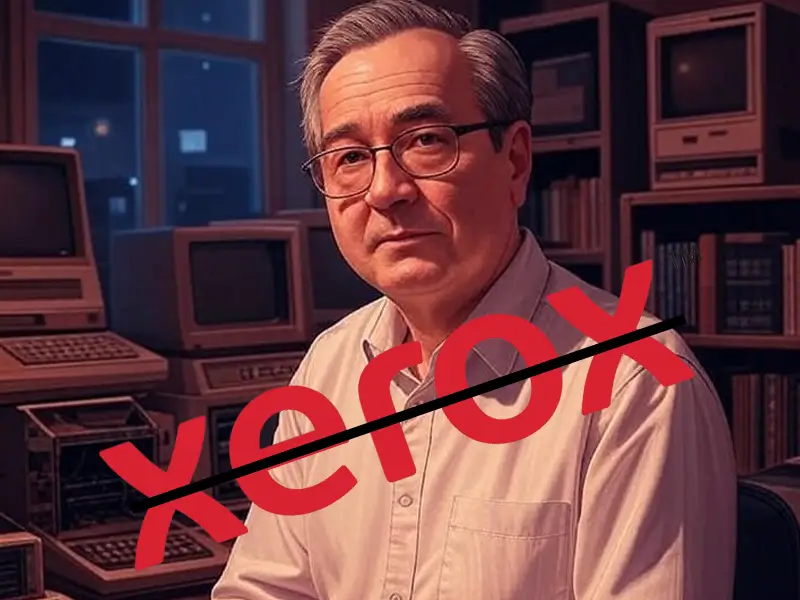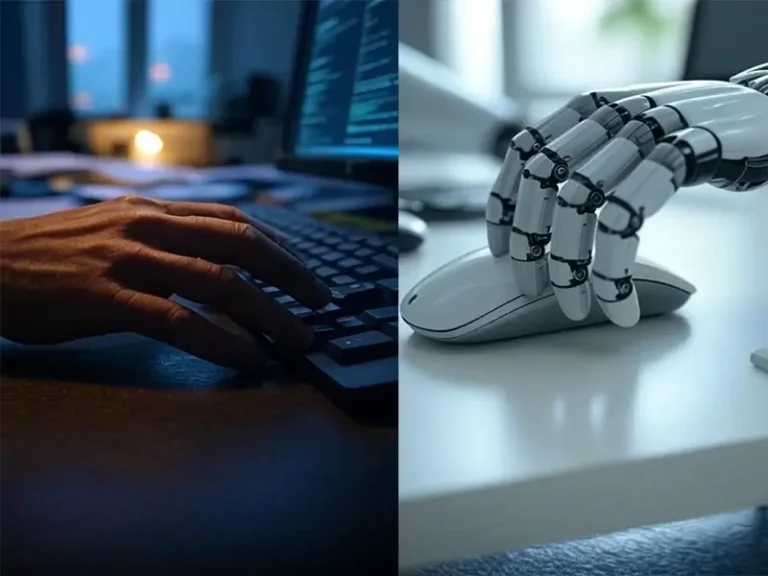Did you know Xerox accidentally invented the modern computer?
When you hear the names Steve Jobs or Bill Gates, chances are you think of innovation, vision, and the digital revolution. But few realize that the real spark behind this revolution came from a company best known for photocopiers.
Yes, we’re talking about Xerox.
You might’ve heard the basics — how Jobs and Gates took inspiration from Xerox’s work on the Graphical User Interface, or how the humble mouse came from the same place. But what’s less talked about is why Xerox built these things in the first place, and why they never did anything with them.
To understand that, let’s rewind to 1959, the year Xerox changed everything.
The Copy Machine Gold Rush
In 1959, Xerox launched its first commercial copy machine, and it was a monster hit. Practically overnight, Xerox became a corporate titan. For the next decade, they held a monopoly over the copying business, pulling in over half a billion dollars in annual sales. It was a king’s ransom at the time.
But good times don’t last forever.
By the late 1960s, Xerox’s patent expired. And suddenly, Japanese manufacturers flooded the market with cheaper, faster alternatives. Xerox’s crown was slipping, and fast.
So they made a bold move. They decided to invest in the future.
Enter PARC, A Lab from the Future
In 1970, Xerox’s chief scientist Jack Goldman founded a research lab in Palo Alto, California. He called it PARC, short for Palo Alto Research Center. His goal was to invent the technologies of tomorrow.
He gave his team full freedom. No rigid corporate rules. No red tape. Just brilliant minds, let loose. And inside that lab, magic happened.
They invented a computer called the Xerox Alto. It had a graphical user interface. It used icons and windows. And it was controlled with a small device no one had seen before — the mouse.
This was the early 1970s. Most people had never even seen a computer before. Yet here was Xerox, quietly holding the blueprint of the future.
But there was a catch.
The researchers were free to invent, but not free to market. That power rested with Xerox executives, who simply didn’t get it.
They saw the Alto as a forty-thousand-dollar machine nobody would ever buy. So they shelved it.
And right there, Xerox made what might be the most expensive mistake in tech history.
Jobs, Gates, and the Great Idea Heist
Steve Jobs got wind of what was happening at PARC. He knew there was gold inside. So he struck a deal. Xerox could buy one hundred thousand dollars’ worth of Apple stock in exchange for a full demo of the Alto.
When Jobs and his team saw it, they were stunned. It wasn’t perfect, but it was light-years ahead of anything else in the world.
Apple ran with it. They refined the graphical interface. Made the mouse cheap and intuitive. And eventually launched the Macintosh.
Bill Gates wasn’t far behind. Microsoft was already building software for Apple at the time. He saw what Apple saw and adapted the GUI concept for Windows.
Both companies even hired away Xerox researchers.
The rest is history.
The Innovation That Never Got a Chance
Today, we think of Apple and Microsoft as the twin engines of the personal computer revolution. But deep in their DNA is the ghost of Xerox PARC.
Xerox had the vision. They had the talent. But they didn’t have the courage to bet on the future.
So what if they had?
What if Xerox had marketed the Alto and built a personal computing empire before anyone else? Could they have become the Apple or Microsoft of the 1980s?
Or would they have failed anyway, victims of timing, pricing, or poor execution?
We’ll never know.
But one thing is clear. The world we live in was built on ideas born at Xerox, but championed by others.
And that might be the most curious legacy of all.
Liked this story? You might be interested in reading – How Tim Cook Quietly Saved Apple. Read it here. Also don’t forget to bookmark Wiz Fact.








